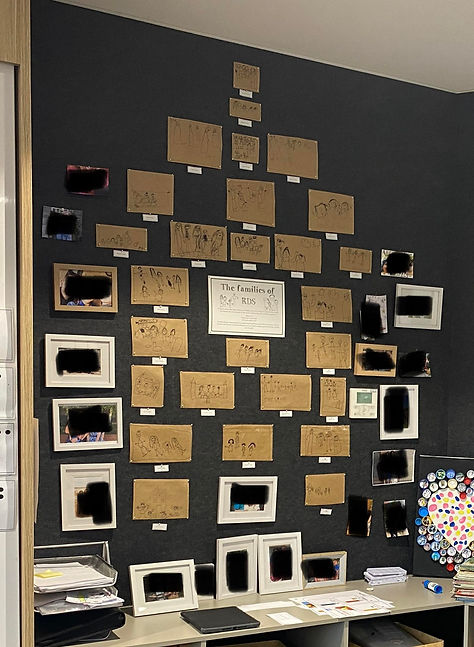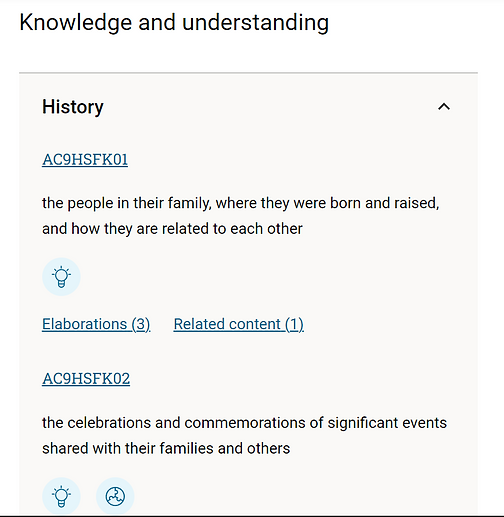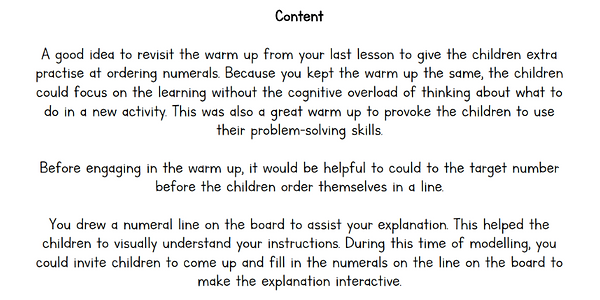
Evidence Set 3
Grow Your Vision
Professional Knowledge
Context
Effective professional knowledge is essential within a classroom setting as it enables a positive, dynamic learning environment and overall, enhances students’ educational experience. When an educator actively engages with their profession, students benefit in many ways. It is my role as an educator to be constantly developing my skills, ensuring to stay updated with relevant research and practices, evolving pedagogies, and effectively collaborating with my colleagues. Research conducted by Ingersoll and Strong (2011) highlights that teacher professional engagement positively impacts student achievement. Engaged educators are more likely to create innovative teaching strategies, adapt to diverse student needs, and provide a supportive atmosphere, which results in higher academic outcomes. Effective professional knowledge fosters a dynamic, supportive atmosphere that benefits both myself and my students.
Using my past experiences as a teacher, I was able to utilise my skills within professional knowledge to apply them to my reception class in my 6-week teaching block. I had not worked with receptions before; however, I was excited for the challenge and to learn. The professional knowledge I was able to carry over into my teaching block with my reception class was knowing how to relationship build with students, knowing and understanding how students learn, where to go for relevant research and practices, up to date pedagogies and collaborating with peers.
Action
To ensure I understood my reception students and how they learnt, I spent time getting to know my students through activities that highlighted their interests and help me to understand them not only as a class, but as individuals so that their learning could be tailored to each of them. According to Gardner’s Theory of Multiple Intelligences (1983), he highlighted that students have different strengths and learning styles. Recognising these differences enables educators to alter instructional strategies to meet diverse needs (Gardner, 1983). Due to the early age of my reception students, they were not able to read or write yet which mean my ‘get to know you activities’ were done verbally and through drawings. Verbally, we did a group share and we each went around the circle and shared an interesting fact about ourselves. The students responded well to this as it was fun, and they not only were learning about me as their teacher but about each other also. I spent a lot of time going around the classroom and speaking with my students individually, learning lots about them.
To gain a deeper understanding of my students and where they came from, I got them to draw a picture of their families, (see figure 1.1). My students were really excited by the idea of drawing their families and this also created a great opportunity for discussions and encouraged them to share things or stories with me regarding their families, some students even brought in photographs that they wanted to add to the wall which I framed and popped up with the drawings, of course with parent/caregiver permission. Parents/caregivers were involved in the getting to know you process. I uploaded the pictures drawn by students on seesaw for families to see and parents were reminded that it was acceptable for students to bring in photographs to add to our class family wall.
My ‘getting to know you’ family drawing activity lead well into my HASS unit plan, following the relevant curriculum listed on ACARA V9. The relevant content for receptions in HASS is family history and important events. I tied my ‘getting to know you’ activity into the beginning of my HASS unit plan. I also used the task as a formative pre-assessment which was fun for my students whilst giving me an insight into how my students understood a task, how well they could successfully complete and task, how long it took them to complete a task, and whether they could focus on a task or were easily distracted/distracting others, (see figure 1.2).
I ensured that I took notes throughout my 6-week teaching block of any observations, particularly in the beginning when getting to know my students, (see figure 1.3). My notes involved observations about students’ learning styles, behaviours, level of readiness, interests etc. It was essential that I took notes to enable effective professional knowledge within my classroom setting. I was able to freely look back at my notes whenever I needed, and they were completely confidential. It helped me to remember things I had noticed and things I wanted to implement within my 6-week teaching block. My notes also reminded me of things I needed to discuss with my colleagues that I may have otherwise forgotten.
Something I knew I needed to work on was my checking for understanding at the end of my lessons to help me plan for my following lesson. I ensured I improved this by asking my students to reflect on their learning at the end of my lessons. These reflections were in the form of students displaying a thumbs up, middle, or down to show their understanding, (see figure 1.4).
To check my students understanding, I would gather my students on the floor (if there was time) or at their desks if on a time crunch and get them to do a show of thumbs for how they found the lesson. I would request my students to close their eyes during this quick reflection so that there was no outside pressure or embarrassment to show how they really felt. Depending on the topic and how smoothly the class ran, I would decipher the question that I asked my reception class. Some days I would ask them to show a thumbs up, middle, or down for whether they understood the lesson. Other days I would ask them to show a thumbs up, middle, or down for whether they enjoyed the lesson. This helped me to see where the class was at. I would make note of what students felt and thought about my lesson and use this to help me plan/alter my following lesson.
Results
Getting to know my students was essential and was one of the first activities I did whilst teaching my reception class for my 6-week block. This activity was not only an effective way for me to build a positive student-teacher relationship, but it doubled as a pre-assessment, “Pre-assessments help teachers determine where to begin instruction and provide teachers with baseline data from which to plot students’ learning progress.” (Guskey, R. T & McTighe, R. 2016). Doing the pre-assessment enabled me to gain and learn important and relevant data on my students to help me plan for the remainder of my teaching block and make any changes to my HASS unit plan that I had already designed.
I ensured throughout my teaching block that I created and maintained professional and positive relationships with my students, colleagues, and parents/caregivers. I ensured that I got to know my students and always planned my teaching content to be accurate against the relevant ACARA V9 curriculum. I understood my students’ needs through observations and note taking and correctly dealt with these needs within my planning. My colleagues provided me with feedback on my professional knowledge both during, (see figure 1.5) and upon the completion of my 6-week teaching block, (see figure 1.6). During my teaching block, I took on all the constructive feedback I received and implemented it within my professional teaching. Upon completion of my teaching block, I was thrilled with the feedback I received, (see figure 1.6).
Evaluation
Upon reflection of my 6-week teaching block, my professional knowledge was something I needed to work on, and I did so by asking for feedback and then taking on that feedback to improve my practice. Referring to figures 1.4 & 1.5, I needed to work on improving my checking for understanding to ensure I knew where my students were at within their learning to successfully prepare for the next lesson. I ensured that I took on this feedback and did closing questions with my students after each lesson to check for understanding. My note taking and observations enabled me to collect important data on my students that aided me within my professional knowledge. My ability to form positive connections with my colleagues and students enables me to foster a positive and academically rich learning environment that both myself and my reception students enjoyed being in. There is always room for improvement, and I will forever be open to growing and learning, that is a journey I am excited to continue. Overall, I am satisfied with my progress throughout my teaching block and believe I display effective professional knowledge within the education cohort.

Figure 1.1: Family drawings and photographs
Family drawings I got my receptions to do as a part of getting to know them and where they come from. Some students also brought in photographs from home.
Focus Areas: 1.1, 3.3, 3.5, 3.7, 4.1, 4.2

Figure 1.2: ACARA V9 Reception HASS
Relevant content descriptors for HASS for reception year level. I used this create my ‘getting to know you’ tasks with my students.
Focus Areas: 2.2, 2.3
ACARA V9, 2023. Retrieved from: https://v9.australiancurriculum.edu.au/f-10-curriculum/learning-areas/hass-f-6/foundation-year?view=quick&detailed-content-descriptions=0&hide-ccp=0&hide-gc=0&side-by-side=1&strands-start-index=0&subjects-start-index=0


Figure 1.3: My own personal notes/observations
A couple of my notes and observations from my 6-week teaching block that aided my professional knowledge during my 6-week teaching block.
Focus Areas: 1.1, 1.2, 1.5

Figure 1.4: Checking for understanding
This figure displays a screenshot from a lesson within my HASS unit plan that displays how the class reflection and checking for understanding worked.
Focus Areas: 3.6, 4.1 4.4, 5.1, 5.3, 5.4



Figure 1.5: Feedback from colleagues
Feedback I received from colleagues during my 6-week teaching block which displays three sets of feedback from three colleagues.
Focus Areas: 6.3, 7.4



Figure 1.6: Feedback from colleagues
Feedback I received from colleagues upon completion of my 6-week teaching block which displays three sets of feedback from three colleagues.
Focus Areas: 6.3, 7.4
Standards
Focus Areas: 1.1, 1.2, 1.5, 2.2, 2.3, 3.3, 3.5, 3.6, 3.7, 4.1, 4.2, 4.4, 5.1, 5.3, 6.3, 7.4
-
Focus area 1.1 Physical, social, and intellectual development, and characteristics of students
Refer to figures 1.1, 1.3: family drawings/photographs encouraged social and intellectual development within the concept of sharing stories and information about their families and where they come from. This led into other conversations and was a great starting point for getting to know my students. Notes and observations helped me to understand my students and their learning styles, interests, etc.
-
Focus area 1.2 Understand how students learn
Refer to figure 1.3: Notes and observations helped me to understand my students and their learning styles, interests, readiness, etc.
-
Focus area 1.5 Differentiate teaching to meet the specific learning needs of students across the full range of abilities
Refer to figure 1.6: Feedback I received from colleagues about my ability to differentiate to suit diverse needs and abilities.
-
Focus area 2.2 Content selection and organisation
Refer to figure 1.2: Relevant content descriptors for HASS as an example of how I utilised ACARA V9 to correctly and effectively plan out my lessons.
-
Focus area 2.3 Curriculum, assessment, and reporting
Refer to figure 1.2: I used ACARA V9 to plan out my lessons correctly and effectively, using relevant content.
-
Focus area 3.3 Use teaching strategies
Refer to figure 1.1: I used various teaching strategies to complete the ‘getting to know you’ activity with my students. I used examples and told them about me and my family, I ran over instructions numerous times, I ran through what items we needed to use and got them to repeat back to me, I used my traffic light noise system and my reflection method upon completion of the lesson.
-
Focus area 3.5 Use effective classroom communication
Refer to figure 1.1: I had to use and encourage effective classroom communication for my lesson to run smoothly.
-
Focus area 3.6 Evaluate and improve teaching programs
Refer to figure 1.4: The use of my reflection/checking for understanding method to improve future teaching methods.
-
Focus area 3.7 Engage parents/carers in the educative process
Refer to figure 1.1: Parents/caregivers were involved in the getting to know you process. I uploaded pictures drawn by students on seesaw for families to see. I involved them by letting them know it was fine to bring in photographs to ass to our class family wall.
-
Focus area 4.1 Support student participation
Refer to figure 1.1, 1.4: Supporting student participation within my lessons, offering help or reassurance when needed through verbal communication. Receiving feedback after lessons to support student participation in future lessons.
-
Focus area 4.2 Manage classroom activities
Refer to figure 1.1: Managing the classroom effectively to ensure my family drawings lesson ran smoothly.
-
Focus area 4.4 Maintain student safety
Refer to figure 1.4: Requesting students to close their eyes when giving their feedback/checking for understanding. This eliminates the chance of bullying if a child puts their thumbs down for not understanding the lesson. Also, eliminates the stress of peer-pressure to do the same as their friend or the majority.
-
Focus area 5.1 Assess student learning
Refer to figure 1.4: Checking for understanding helps me to assess student learning.
-
Focus area 5.3 Make consistent and comparable judgements
Refer to figure 1.4: Checking for understanding enables me to make consistent and comparable judgements.
-
Focus area 6.3 Engage with colleagues and improve practice
Refer to figures 1.5, 1.6: Receiving and taking on board/implementing feedback from my colleagues to improve my practice.
-
Focus area 7.4 Engage with professional teaching networks and broader communities
Refer to figures 1.5, 1.6: Receiving and taking on board/implementing feedback from my colleagues to improve my practice. Asking my colleagues for advice or recommendations. Creating positive and effective relationships with professional networks and broader communities.
References
-
ACARA V9. (2023). HASS F-6 – Foundation Year. Retrieved from: https://v9.australiancurriculum.edu.au/f-10-curriculum/learning-areas/hass-f-6/foundation-year?view=quick&detailed-content-descriptions=0&hide-ccp=0&hide-gc=0&side-by-side=1&strands-start-index=0&subjects-start-index=0
-
Australian Institute for Teaching and School Leadership. (2017). Resource. AITSL. https://www.aitsl.edu.au/tools-resources/resource/australian-professional-standards-for-teachers
-
Gardner, H. (1983). Frames of mind: The theory of multiple intelligences. New York, NY: Basic Books.
-
Guskey, R. T. & McTighe, J. (2016). PRE-ASSESSMENT: Promises and Cautions. University of Kentucky, UKnowledge. Retrieved from: https://uknowledge.uky.edu/cgi/viewcontent.cgi?article=1016&context=edp_facpub#:~:text=Pre%2Dassessments%20are%20the%20instruments,to%20plot%20students'%20learning%20progress.
-
Ingersoll, R., & Strong, M. (2011). The impact of induction and mentoring programs for beginning teachers: A critical review of the research. Review of Educational Research, 81(2), 201-233.